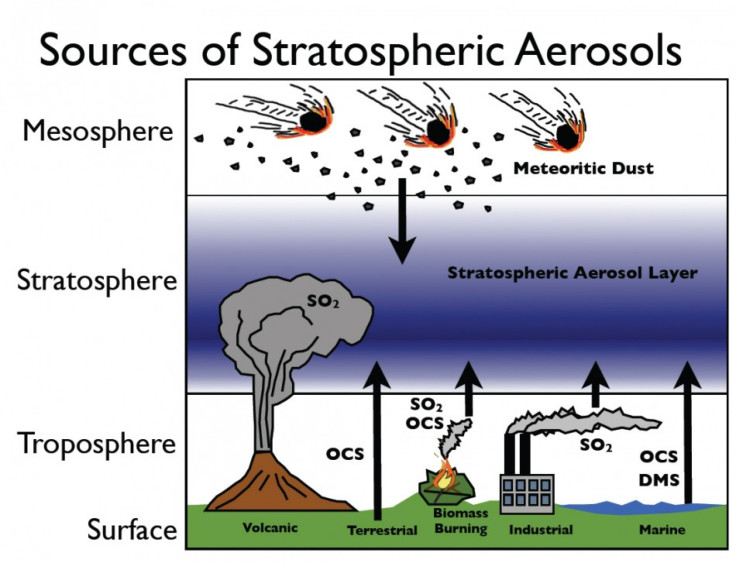Aerosols Slowed Global Warming by 1/3 in 2000s: Study

The effects of human-induced global warming were reduced by one third by stratospheric aerosols, according to a study by the National Oceanic and Atmospheric Administration (NOAA).
The study estimates that human-induced global warming was 0.28 watts per m² of heating for the 2000s. That figure, however, was muted by the 0.1 watts per m² of cooling by stratospheric aerosols.
The aerosols, or small airborne particles, in the stratosphere cool the earth by reflecting the sunlight back into space.
In the 2000s, there was a definitive increase in stratospheric aerosol, said the NOAA scientists. They can't pinpoint the source exactly, but likely suspects include volcanic eruptions and gasoline burning.
If levels of stratospheric aerosols keep increasing, global warming will likely be muted in the future. However, if it decreases, like it did in the 1960s, global warming could be accelerated, according to the study.
The fact that aerosol could cool the planet and counteract the effect of man-induced carbon emission greenhouse warming has caught the attention of scientists.
They are currently considering techniques to purposely increase the level of stratospheric areole should global warming get out of hand.
John Holdren, science adviser to President Barack Obama, told the Associated Press in 2009 that extreme techniques like shooting pollution particles into the stratosphere could be deployed if tipping points, such as the complete loss of summer sea ice in the Arctic, are breached.
© Copyright IBTimes 2024. All rights reserved.





















